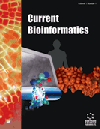
Full text loading...

Associations of abnormally expressed miRNAs with disease development have long been investigated in the biomedical field. The association types are diverse and complex, including circulation type, epigenetic type, target type, and genetic type, as well as various unknown associations and possibly novel association types. However, most current studies focus on the yes/no binary prediction of miRNA–disease associations. Algorithms for multi-type prediction or novel-type discovery of these associations are less developed.
Graph convolution and attention mechanisms, integrated within a deep learning framework, form the basis of deepMDpred. In the first step, deepMDpred employs the ViennaRNA tool to derive sequence and functional features of miRNAs by calculating base pairs, minimum free energy, and other relevant properties. In the second step, disease features are extracted using a Graph Convolutional Network (GCN) combined with attention learning, enabling the adaptive capture of the importance of different node features. Finally, a nonlinear fully connected layer (NFCL) is applied to generate the embedding vectors for both diseases and miRNAs.
In five-fold cross-validation, the model achieved high predictive performance for multi-type miRNA–disease associations. For task 1, the average AUC across the four predicted types exceeded 85%, with the genetics type achieving an accuracy of 0.919. For tasks 2 and 3, the average AUC exceeded 80%, and for the un-association type, the AUC reached 0.894. Validation using the HMDD v2.0 and HMDD v3.2 databases confirmed the robustness of the model, while additional case studies with the HMDD v3.2 and HMDD v4.0 databases demonstrated its applicability. Furthermore, investigations in breast and liver cancers supported the method’s capability to identify novel miRNA–disease associations.
The findings of this study demonstrate the potential of DeepMDpred as a novel and effective approach for predicting multi-type associations between miRNAs and diseases. Validation across multiple databases, along with successful application in case studies on breast and liver cancers, underscores the generalizability and practical utility of this approach. The framework also offers a pathway for identifying novel associations, which may accelerate the discovery of biomarkers and therapeutic targets in complex diseases such as cancer. Nonetheless, certain limitations remain. Although the model achieves strong performance on curated datasets, its robustness in real-world noisy datasets and its applicability to rare diseases require further investigation. Future research should also consider integrating additional data modalities, including epigenetic modifications and clinical phenotypes, to improve predictive accuracy further and broaden the scope of application.
DeepMDpred is an effective method that combines graph convolution and attention learning for the multi-type prediction of miRNA-disease associations. It provides a better ability to identify new association types between diseases and miRNAs, as well as broader applicability to unveil associated miRNAs with new diseases.